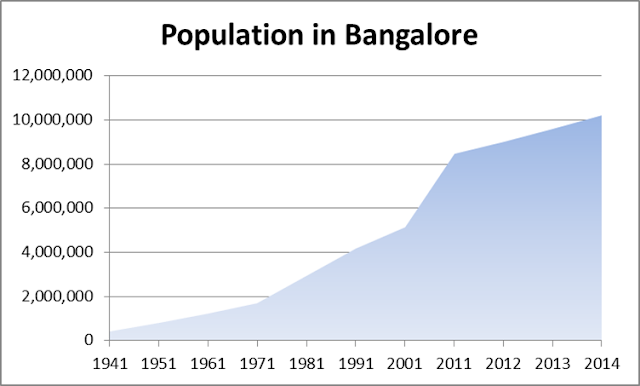This would
look weird. After US Fed raised interest rates by 0.25%, all emerging market
currencies (including Rupee) started their downfall and equity markets all over
the world are falling sharply, they lost 20-30% after the Fed’s announcement
has come in. How can this small change in capital costs have such a big impact
on the stock markets?
Reducing money supply in the system
My hypothesis
is, it is the liquidity contraction in US which is causing the damage and not
the interest rates directly. Here is my attempt to explain. First we need to
understand that, all central banks decide the rates first and to ensure market
follow that rate, they adjust the money supply or the liquidity in the system.
Increase in the money supply will make rates drop. Reducing money supply will
cause rates to rise. So when US Fed increased its rates, it had to cut its
money supply in order to ensure interest rates catch up with decided rate. Let
us look at the data.
 |
| US M0 Money supply. Source: Tradingeconomics.com |
Data shows
that M0 money supply in US dropped by $24B in the last month. That much money
disappeared from the system. When we get next month’s data, we will see that
trend is continuing. This reverse money flow triggered a serious sell-off in the equity
markets and damaged many currencies as the money had to be converted into US Dollar before it got back to US central banks and finally disappeared from the system.
Even a sell-off of $5B can pressurize the equity markets as there won’t be buyers for such a big sum sitting on the sidelines, so that leads to price erosion very quickly. As
selling intensified (remember this money will not come back into the system),
equity and currencies saw a bigger damage.
How it all started?
If you see
the chart, Fed’s balance sheet started expanding after 2008 financial crisis.
Their decision to print new money (through QE) to save their economy led to
increase in balance sheet, from less than a $1 trillion to $4 trillions in a five
years period or so. At the end of 2014, they decided to stop QE’s, so balance sheet
expansion had also stopped from then. And in the end of 2015, they decided to raise the
rates. This reversal led to contraction in money supply now in the beginning
of 2016. Whatever went up with easy money, is seeing a reversal too but the
correction is very quick.
How long it
can go on?
If Fed raises
rates again, we will see further contraction in money supply in the US and it adds
to pressure in global equity markets and currencies. If they delay their plan,
markets would see a breather. If they announce a fresh QE, markets will see a
new high. Most likely scenario is, they will raise the rates in a slow manner. That
would mean markets may not come back quickly and remain depressed for some more
time or throughout this year. Whatever air was there in the markets, probably it is gone
by now.
Is there a
new recession around the corner?
No. Since US economy
was doing good and employment levels were high, US Fed decided to raise the
rates. But the adjustment in money supply resulted in revaluation of asset
classes. Dollar gained at the expense of other currencies and a rout in commodities.
This correction may not be indicating any problems with the economy but those
who depended on easy money would do badly.
What will
happen to Rupee?
Rupee,
commodities and real estate will see headwinds until the turbulence in internal
market calms down which is likely to last for the entire year. Comparatively
India is doing good but that would offer no big relief to Rupee. Though Rupee
may not see huge damage from here, it may not go back to 60 (for a dollar)
levels any time soon. 65-70 will be the new norm. The financial markets made a
bad start in 2016 and the data suggests that there would not be any strong
reversals and 2016 is most likely to remain a depressed year for market
participants.





